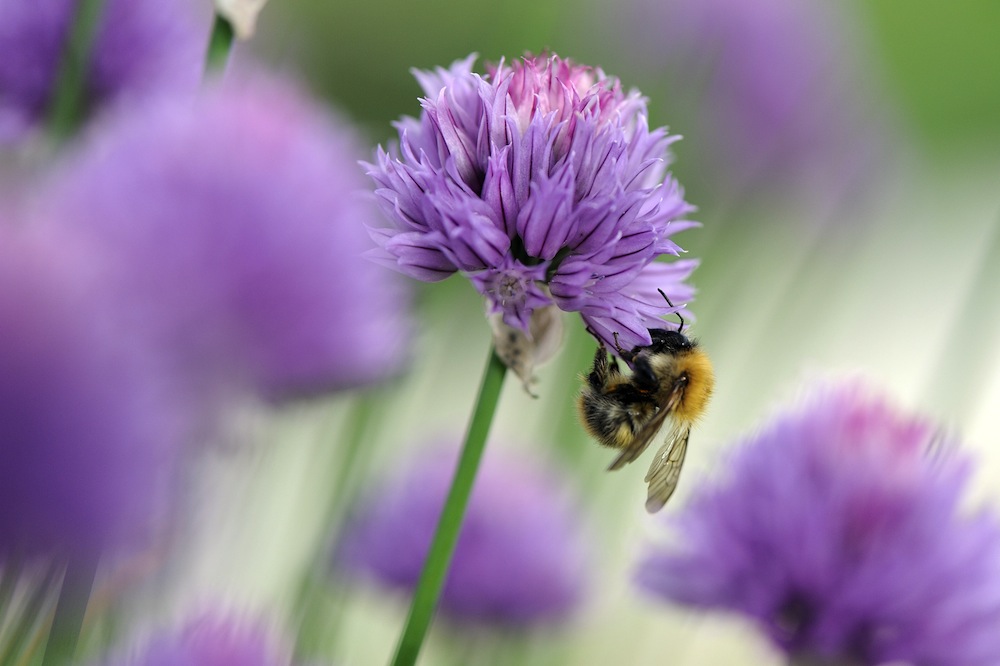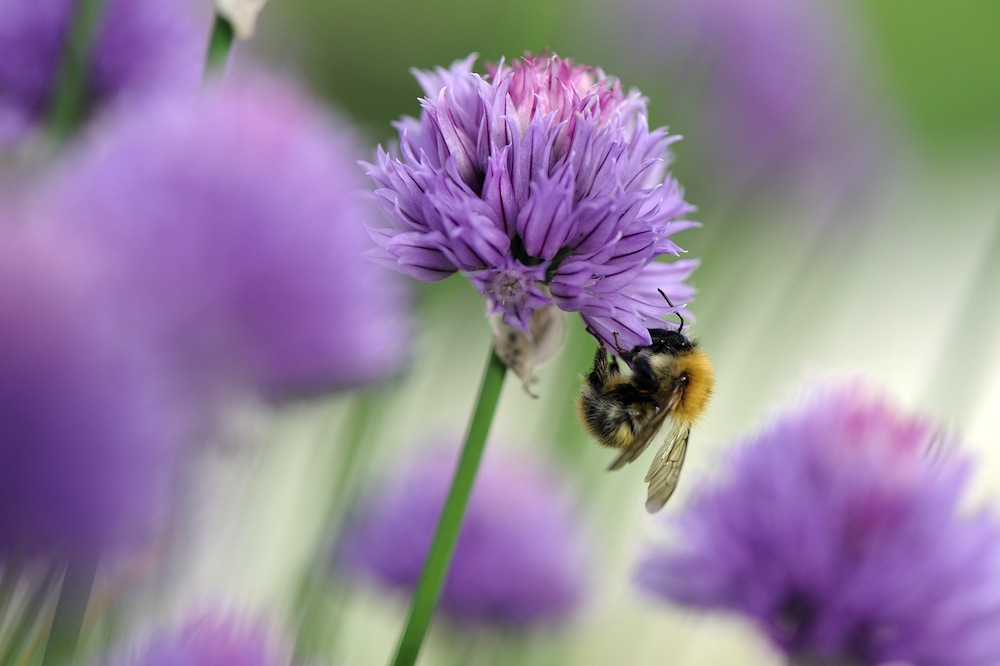
Easter came early this year, making us think that the season is further advanced than it actually is – but, though we shouldn’t get ahead of ourselves, there’s still plenty to do.
Cold nights in April and May can soon set back tender plants put out too soon, so be patient; there’s plenty to plant out and do in the vegetable plot at the moment. Plant smaller quantities little and often to keep a steady supply of veg for the kitchen. There are many varieties of veg available; why not try something a bit different such as pak choi, butternut squash, cucamelona or okra? Most garden centres sell packs of vegetable plants so it’s easy to plant out a few every fortnight as well as sowing seeds of radish, spring onions and basil little and often. Basil is a becoming[L1] more and more popular and there are many types to choose from including sweet, purple and Thai.
Cover fruit bushes with netting to stop the birds picking your fruit before you do. You may wish to spray fruit trees before flowers open and after fruit has set to keep bugs under control; Provado Fruit and Veg Bug Killer is a good insecticide. Keep bushes watered if it’s dry to discourage mildews and clear up any diseased foliage when seen.
Salad days
Tomato, cucumber and pepper plants should not be planted outside until the end of May and need some night-time heat inside if temperatures are dropping low. Gardeners Delight is a good cherry tomato; Tumbler is ideal for a heavy crop in a hanging basket; or try one of the more unusual varities like Tigerella with its striped fruit or Golden Crown with its yellow fruits which are less acidic than the red forms.
Watch out for slug damage on young herbaceous plants and summer bedding such as marigolds. Use slug pellets or one of the natural controls that are available. Slug Gone is a good choice – it’s made from wool and sold as pellets, which you place round the base of plants. When they get damp, small fibres in the pellets act as an irritant to slugs.
Many herbaceous plants flower in their first year and there’s always a good selection available on the outdoor tables of gardening centres. The first batch of West Country lupins should be ready now; with their many vibrant colours they make a delightful splash of colour, along with the hardy geraniums and the coloured leaves of the heuchera. Also available are the ever-popular delphiniums and foxgloves.
Time for colour
Summer bedding can be planted outside from the end of May, so long as we aren’t getting any late frosts. antirrhinums, asters and lobelia first, leaving marigolds, begonias, impatiens and geraniums until the beginning of June if necessary. Water well to get established, then feed fortnightly and dead head regularly. We’ll be growing some of the ordinary bedding impatiens again this year – the downy mildew problem has improved over the last couple of years, but you still need to be vigilant; it’s an airborne disease and spreads easily when water is splashed over the top of the plants.
Start making up hanging baskets and tubs, but don’t leave them outside at night until the beginning of June as a late frost will spoil them. Use a good multipurpose or tub and basket compost that has added moisture control and slow-release fertiliser. Once planted, they can be stood outside if we get a nice warm day, but bring them in at night. Don’t be tempted to put them in a dark garage or shed; they need good light levels at the moment to get established. Water regularly – everyday when the sun starts shining and feed weekly with a plant food such as Miracle Grow All Purpose or Phostrogen. Don’t forget to dead head often and your plants will give colour right through to the autumn.
Be vigilant
Hoe borders frequently, preferably on a nice sunny day, and any weeds that are beginning to get established will wilt and die off quickly; regular hoeing will also allow air into the top layer of soil and encourage root growth.
As the weather improves the grass will wake up and need regular cutting. Do a light cut first, gradually reducing the mower height over several cuts. Although the winter wasn’t particularly cold, it was rather wet and if like my lawn, yours has plenty of moss in it try the MO Bacter organic moss treatment. It can be applied to your lawn at any time from March through to September, and contains an organic fertilizer that releases over a three-month period which digests the moss, greens the lawn and improves the soil. It leaves no unsightly black patches and scarifying is not necessary. I know it sounds too good to be true, but we’ve used it regularly over the last three or four years and our lawn now looks much better than when we were using conventional treatments!
This issue’s tips are provided by Ann Winwood of Lealans Garden Centre, Shipley.






